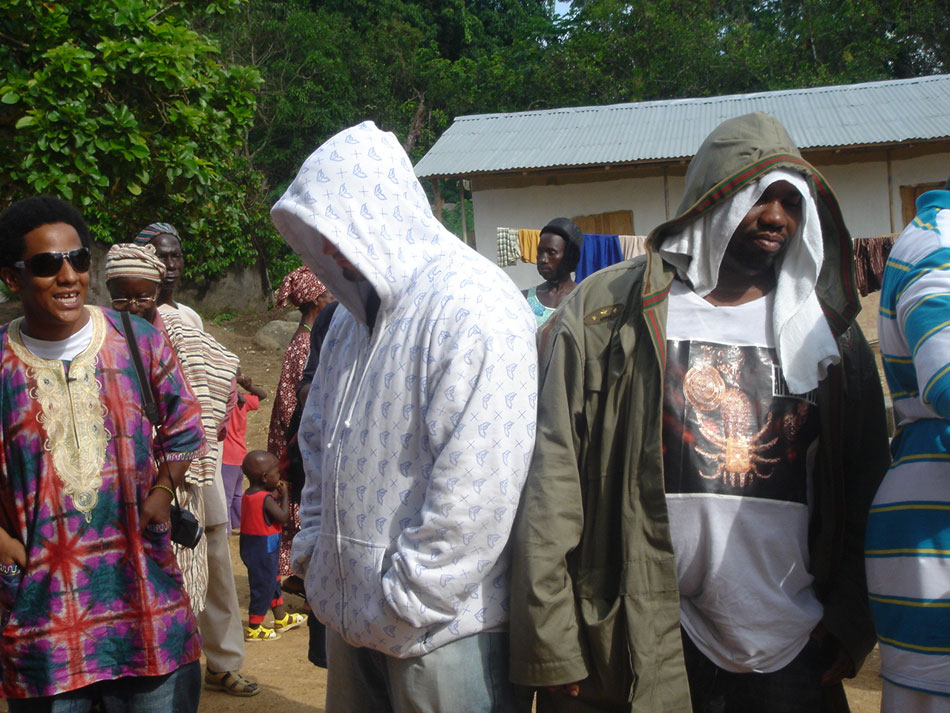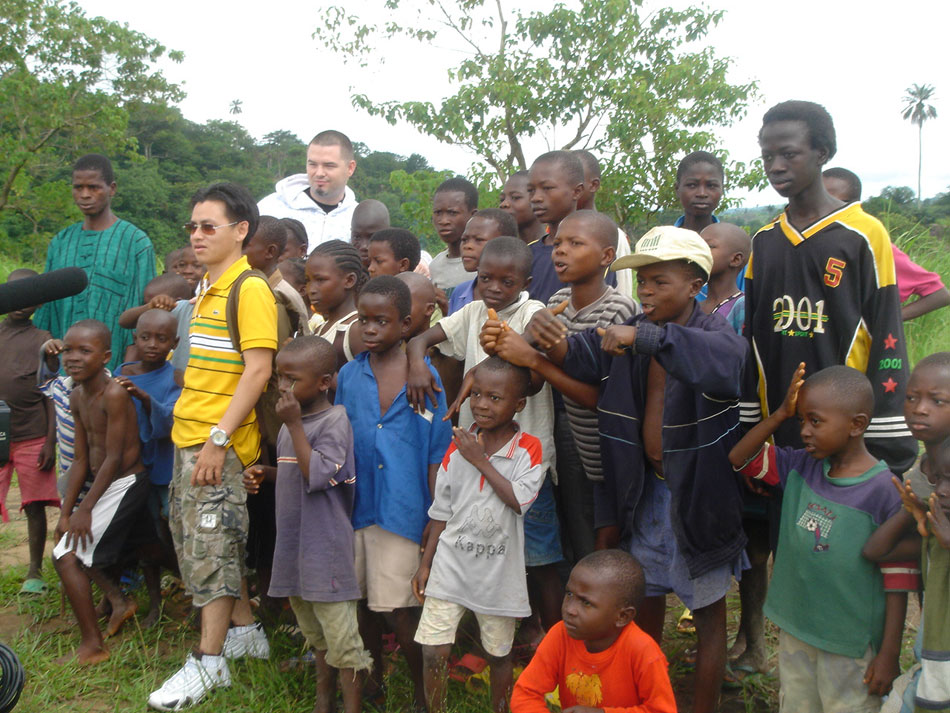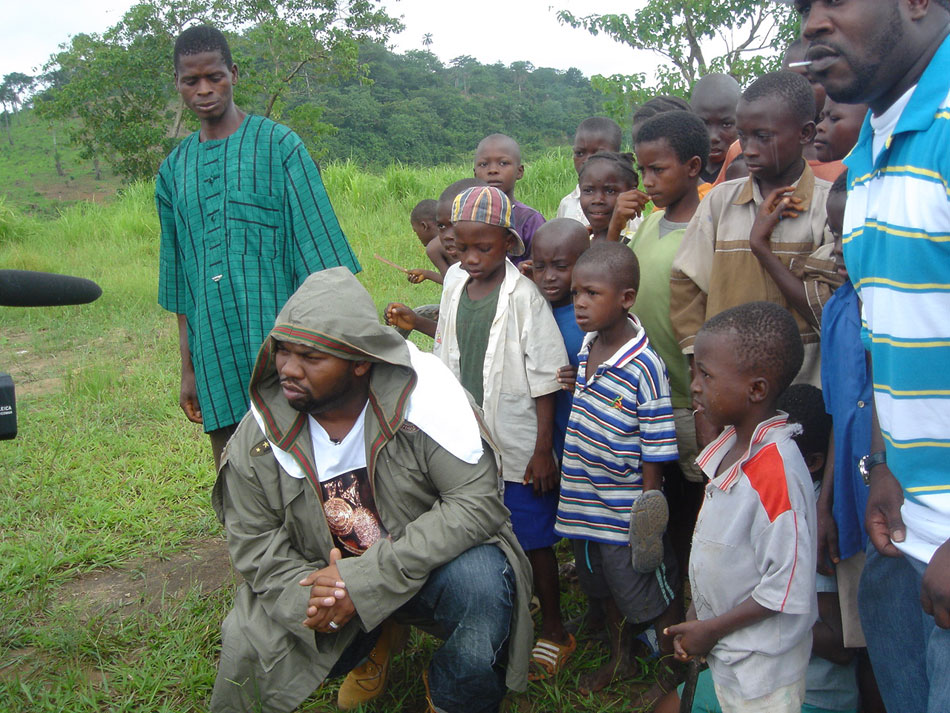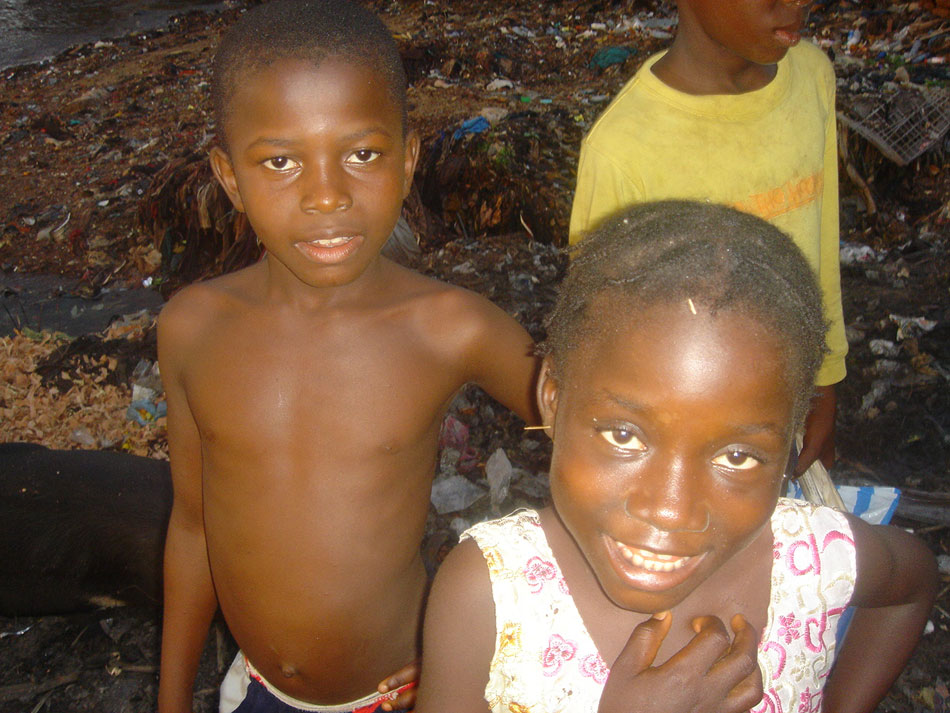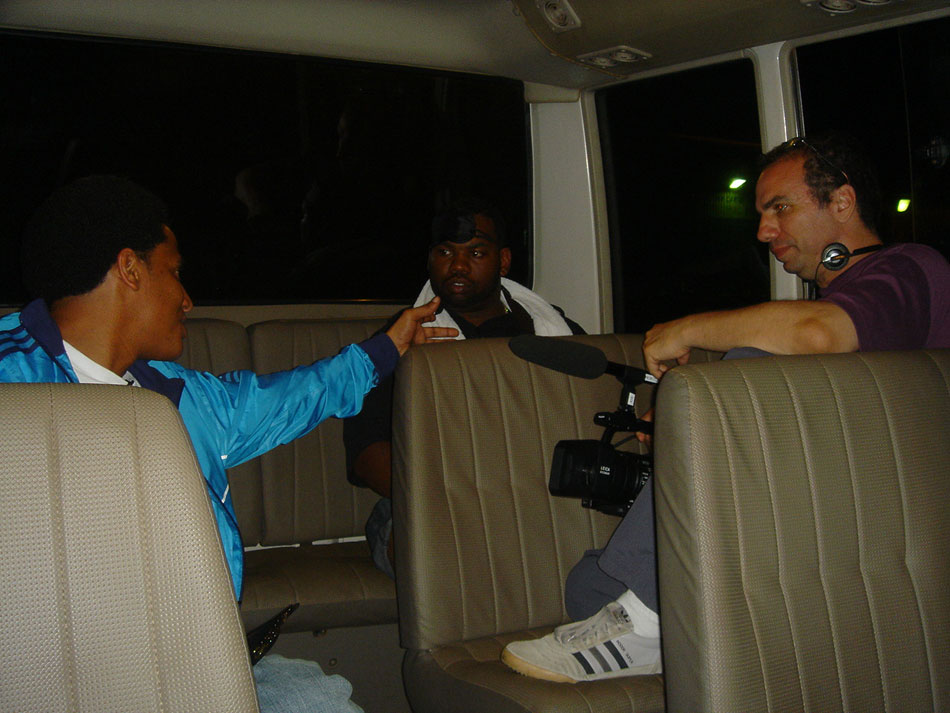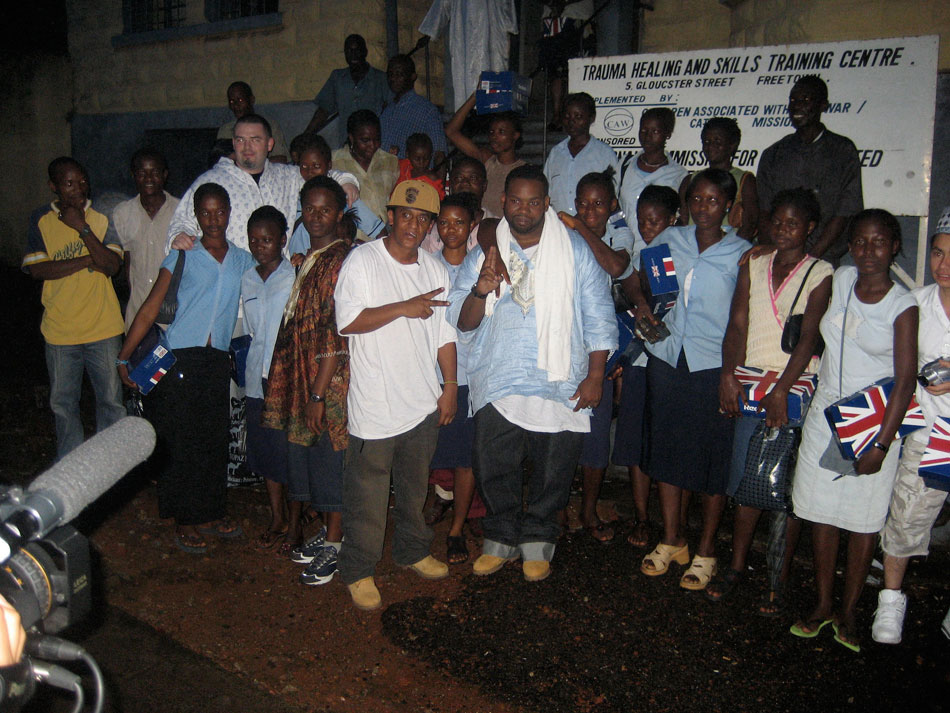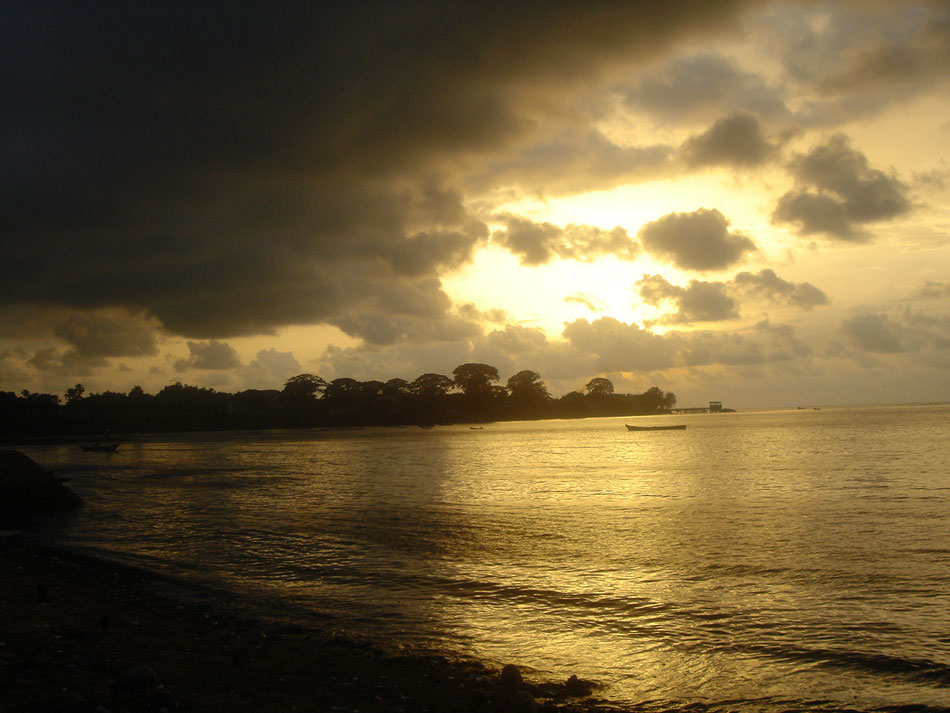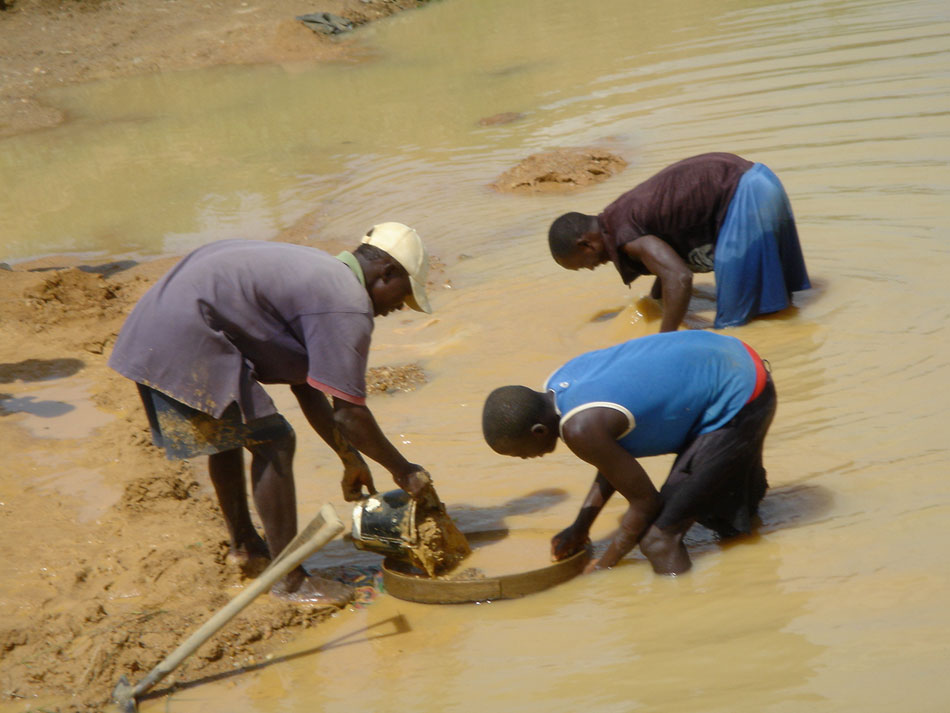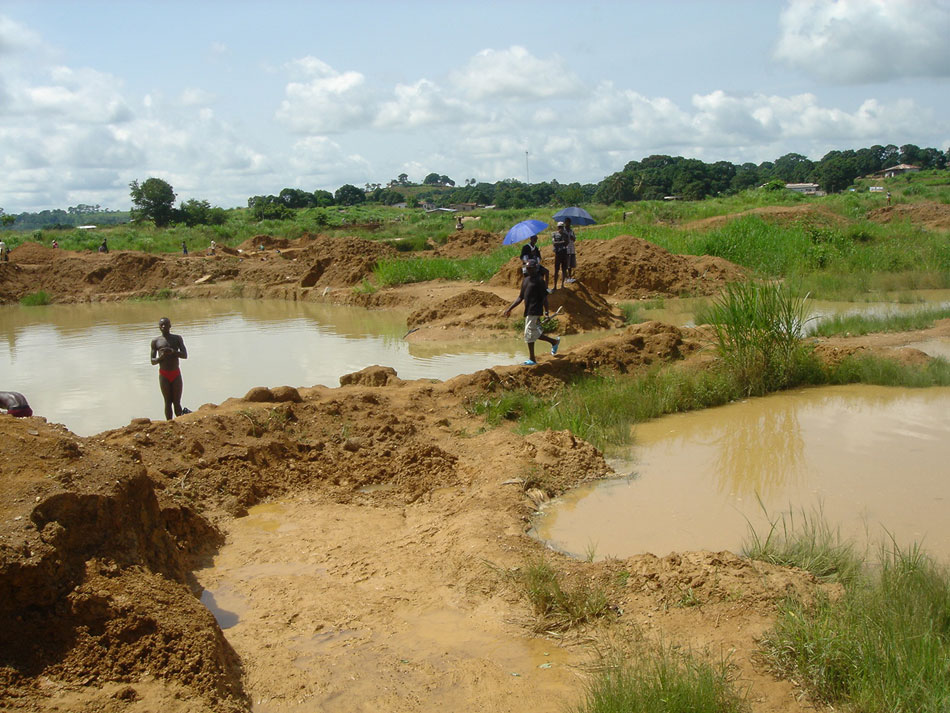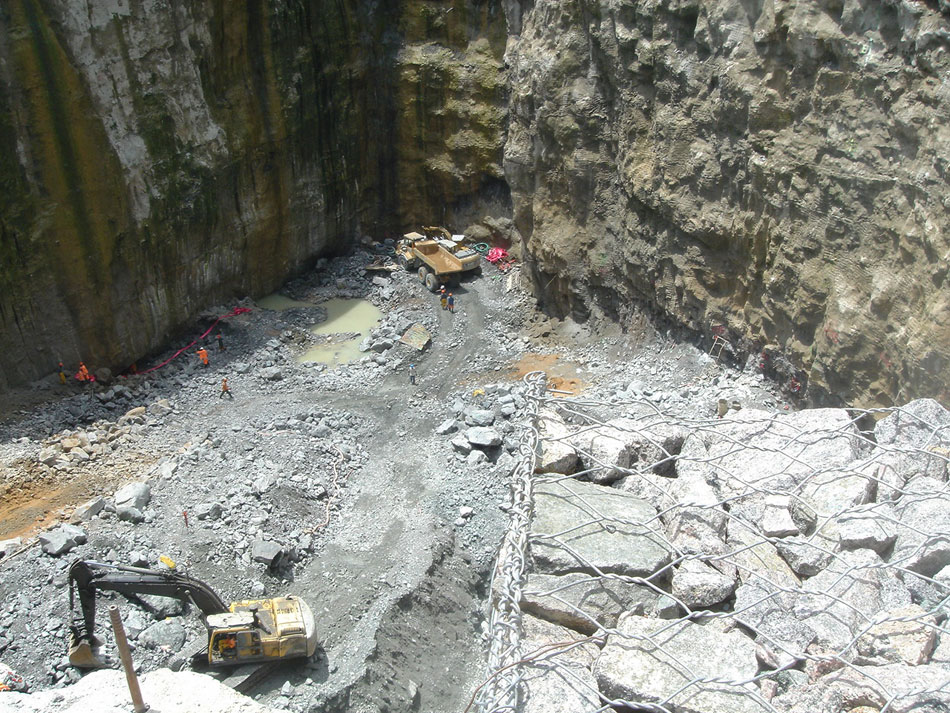Bling: A Planet Rock
Synopsis
Bling: A Planet Rock is an 87-minute documentary that takes a hard-hitting look at how the flashy world of commercial hip-hop played a significant role in the 10-year civil war in Sierra Leone, West Africa. The term “bling” refers to the shine emanating from polished diamonds that represent the status symbol for hip-hop luminaries and fans alike. Bling: A Planet Rock follows three hip-hop artists: Raekwon (Wu-Tang Clan), Paul Wall, and Puerto Rican emcee and activist Tego Calderon. Former child soldier and international bestselling author Ishmael Beah (A Long Way Gone) returns to Sierra Leone for the first time since escaping the war and reveals how hip-hop literally saved his life. In the film, our
protagonists visit the capital of Freetown and Kono where they survey the devastated country, meet the hip-hop community, as well as encounter refugees and former child soldiers first hand. The stars are visibly affected by the accounts of the atrocities suffered at the hands of the rebels that included rape, torture and amputation. The film effectively captures the hip-hop community’s reaction to the human rights violations and the complexities that still exist, while presenting a much needed global perspective for our youth through the dominant voice of hip-hop.
BLING: A PLANET ROCK FAQ
What would you like to see happen in Sierra Leone?
I’d love to see an end to the mineral pillaging of the country. Sierra Leoneans deserve to benefit from their natural resources. I would especially like to see an end to gender violence and sexual exploitation of women and girls by locals, foreign businessmen and aid workers. And on that note, I went to go see dear friend and colleague, the author Jimmie Briggs, speak about a trip he took to the Congo recently. He said something that I thought was right on the money: people in the Congo aren’t only committing gender violence their communities. I believe that the international community should help equip the Congolese people with the tools necessary to save themselves, as opposed to interlopers charging into these communities on proverbial white horses. I believe that this too applies to Sierra Leone and other so-called Third World countries around the world.
Photo by Irena Mihova
What do you hope people take away from the film?
My hope is that young people become empowered by hip-hop’s ability to be used as a tool for social awareness, both here and abroad.
What was the best thing about making Bling…?
Professionally, it was seeing the film realized. I also met people I’d like to work with again under more ideal circumstances.
Personally, it was going to Sierra Leone, a country I had been researching for quite some time. Many Dominicans are encouraged to shun anything associated with the African Diaspora. Our food, dance, music and many parts of our culture spawn from West Africa. And most Dominicans are of mixed-race (even though they swear to be “indio”; which is sadly misinformed because Columbus committed genocide against the Amerindians living on the island within the first few decades of his corporate invasion). So, to be back in West Africa was something of a spiritual sojourn for me.
What is the most interesting discovery you happened upon while making the film?
As a filmmaker, I approached this project with the real desire to tell a story that I felt was really important. But filmmaking, unfortunately, isn’t just about shooting and editing: it’s really about dollars and sense and politics and production companies and networks. Regardless of the rigors I faced, as a filmmaker I learned a lot from the experience and I feel blessed to have had the opportunity to share this story with so many people.
Photo by Irena Mihova
How does hip-hop educate about global issues?
Hip-hop created by mostly poor young people in New York City, is, at its best, an act of open resistance. It was the rebel yell of disenfranchised youth who transformed what little was given to them into performance art. Hip-hop was essentially art therapy, and to see said American counterculture go on to inspire and heal (and, in some instances, hurt) generations of people-from Israelis to Palestinians to South Africans and Maoris and everyone else in between-is amazing thing. I think that if people here in the States bore witness to this power, it will not only educate but also inspire global awareness and real change.
This is also true for communities around the worldL for instance, I’ve met young diehard hip-hop heads in Ghana who learned about the conflict in Sierra Leone through my film. It’s pretty incredible to think that a Dominican by way of New York flew ten hours to hip a person in Ghana about what happened only a few hours away in Sierra Leon. And what I learned in Ghana about youth culture and hip-hop due to my film has changed my life as well: it’s two-way street. As a matter of fact, I recently showed my film at the Hebrew Tabernacle in my neighborhood and had a chance to dialogue with people whom I would have probably never met if it had not been for, even indirectly, hip-hop!
How were the artists chosen to go on pilgrimage?
It was a blessing to have Tego Calderon, Paul Wall and Wu Tang’s Raekwon travel to Sierra Leone. They represent the ethnic and cultural diversity found in the Americas, and as a filmmaker I felt it was important for the entire face of America to understand the weight of what has happened there. I think Tego, Paul and Raekwon’s “fish out of water” experience in Sierra Leone communicated emotions in a language that many people can understand-on and off screen.
When did you start working on the film?
I started writing the treatment for Bling at the end of 2001 while working as editor in chief of Russell Simmons’ Oneworld magazine.
Photo by Irena Mihova
Did Kanye West’s single “Diamonds from Sierra Leone” inspire your film?
Bling: A Planet Rock was not inspired by Kanye’s amazing song. However, thankfully, the tune was released at a great time because it helped me gain the support that was needed to realize the project. Kanye is featured in the film and added a necessary perspective; whoe better to help articulate hip-hop’s obsession with all things that bling than Mr. West at the time? He was very special-still is-because of his mass appeal both in and out of the hip-hop community.
How did connecting hip-hop to the conflict in Sierra Leone come about?
As the chief editor of Russels Simmons’ Oneworld magazine, my goal was to bring the internalist flavor of the “one world” name to life by using my editorial real estate to promote the notion of global community. I believed it was important to inspire our demographic to travel, to become citizens of Earth rather than just America. I realized that using hip-hop parlance was the best way to engage such a broad body of readers. I also realized that that same power could be utilized in films to make some rather compelling statements.
I believe that travel is as important a tool for self-development and discovery-it’s a facet of education that many Americans take for granted. By seeing how people live around the world, we better understand how our lives here impact such distant communities. Seeing is believing, and believing transforms change into something more than an ideal.
I was especially fixed on how youth culture was using hip-hop dance, music, art, fashion and multi-media to define themselves while trying to make sense of the world around them. As a result, in Oneworld, I published features about hip-hop in New Zealand, South Africa, Native America (that is, on the res.), among other things.

